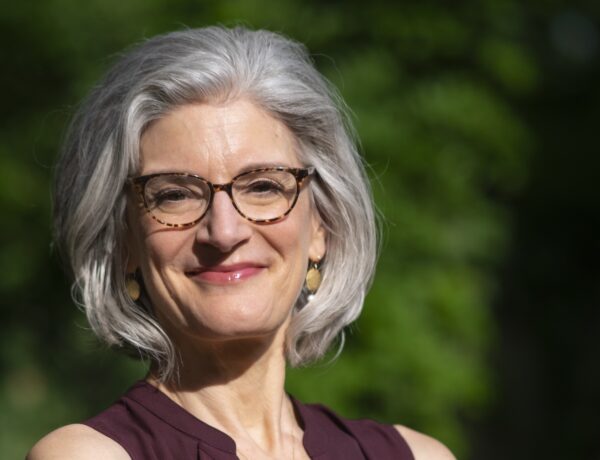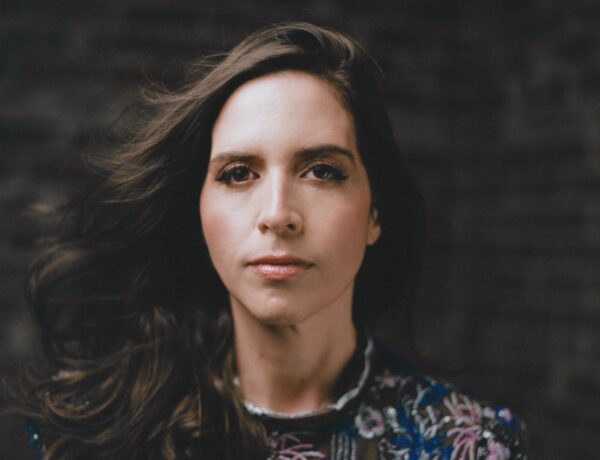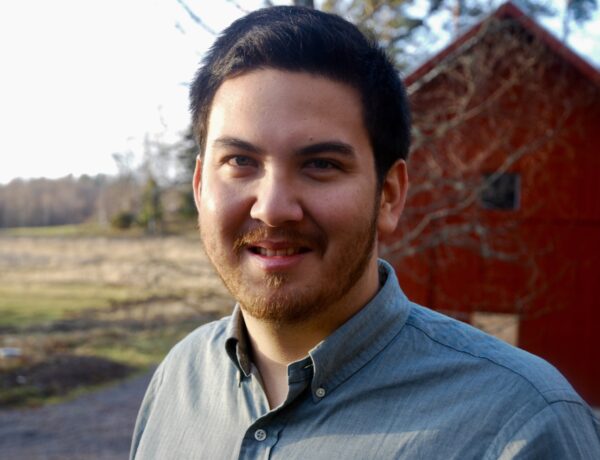Melissa Marr is also the author of The Hidden Knife. She writes fiction for adults, teens, and children, and her books have been translated into 28 languages and been bestsellers in the US (NY Times, LA Times, USA Today, Wall Street Journal) and internationally.
She wrote the bestselling picture book Bunny Roo, I Love You, and its companion, Bunny Roo and Duckling Too. She is well-known for the Wicked Lovely series for teens and the Graveminder series for adults. She lives in Arizona with her spouse, children, and many dogs.
Hi Melissa, welcome to Famous Writing Routines, great to have you here with us today! Your latest book, The Hidden Dragon, has been described as “an uplifting, character-focused tale about family and grand adventure.” Can you talk a bit about the themes of hope, compassion, and social responsibility that you weave into the story?
I’m a believer in the notion that we ought to leave a place better than it was when we arrived, and I think that drive is the root of the hope in the story for me. Maybe it’s idealistic, but I passed my half-century birthday, and I still believe that. I think that this Life Motto echoes in my books. We choose what small good we do each day or we sow small seeds of darkness. I can plant hope or hate. One of those bears fruit, and the other leaks poison. I’m here to sow seeds of positivity.
Otter and London are both strong, resourceful, and quick-witted characters who work together to fight injustice and protect the defenseless. Can you talk a bit about the process of developing their characters, and what you hope readers will take away from their journey?
I had an image of a girl with multi-coloured tangles of hair on a ship as a dragon claw raked the deck, and she had to act to save her crew and the dragon. That image was in 2016. The rest of it came from “okay and then?” and “so what if?” It just grew from Ottilie Jo Maul standing there face-to-claw. Honestly, for me, writing is one third magic, one third hard work, and one third sheer determination. I can’t explain how much as I suspect I should. It simply is.
For the first time, I have a clear answer to the “take away” question! Fiction for kids often posits a mwah-ha-ha villain. Adult or monstrous, but in reality the villains that kids face are more mundane. Not dragons. Hunger, poverty, holes in their educational system, while the adults in charge are too busy collecting money from lobbyists to make changes happen. So I wanted to give a fantastical broken world in which the kids can make changes through their courage and love—because that’s a real case of slaying monsters with weapons every person has.
The book is set in a fanciful, magic-filled world reminiscent of the Victorian era. What was the research process like for creating this world, and how did you balance historical details with fantasy elements?
The Victorians were one of my academic areas in grad school, and then I taught British Lit—and of course, the resurgence of interest in folklore, development of photography, and many other interesting things were happening. Of course, the Victorian mindset was such that a sea captain reported seeing a dragon in the waves. To them, the Natural World was fantastical. The narwhal would likely have been as remarkable as the unicorn.
For me, this book was very much a write-what-I-know. The big area of research was boots on the ground. Pre-pandemic years, I went to Edinburgh for a lot of tours, as well as Prague, Amsterdam, and Delft. You can see those cities in the roots of Glass City, and the sea scenes sprang from ferries, Rigid Inflatable Boats, and even speed boats in seas there and on the small boat from Skagway to Juneau, Alaska. World-building is my happy place. It’s a big puzzle, and I like to layer it around the story.
Your debut novel Wicked Lovely was a massive hit, spawning a multi-book series and reaching bestseller lists in the US and beyond. How did it feel to have such success right out of the gate with your first published book?
Terrifying. Absolutely terrifying and intimidating. I was teaching deployed Sailors and Marines via distance education, homeschooling my kids, and suddenly I have all these people counting on me to not screw up the next book. The pressure was unplanned, but I couldn’t say no. Within four months of the release of Wicked Lovely, I was offered a million-dollar deal for three more books. On the upside it was validating that readers were able to find joy in my books and that I could look after my kids and assorted relatives.
As an author who has been published by major publishers like HarperCollins and Penguin, but has also self-published, how has your experience with indie publishing differed from traditional publishing, and what advice would you give to authors who are considering self-publishing their own work?
I think, for me, trying new things is critical. I did an Audible Original, and I have a graphic novel coming in 2024 (from D.C. Comics). My last book, The Hidden Dragon, is a middle grade, but I just submitted my 100k word adult fantasy to a new editor—and last year I had a book of my photography (Wild Horses) come out from Penguin. I’ve written picture books, middle grade, young adult, and adult. I have fantasy, romance, and thriller on the shelves. So I’m an experimenter by nature.
For me, indie publishing was a way to reach readers with a book series that wasn’t going to be a huge NY publishing hit. It was more financially sound to release it myself, especially during a pandemic. My best advice is to learn the market. What genre are you writing? How is your work best able to reach your readers?
My photography book just landed in Dolly Parton’s library where a literal hundred thousand plus kids will receive copies. That was because it was a NY book. On the other hand, I decided to give my first book, The Wicked & The Dead, in my indie series away for the winter holidays because I could because it’s in my control. So there’s no one size fits all for me. Not in genre, medium, or distribution path. I like to diversify, and I recommend it.
In addition to writing, you’ve also edited anthologies and written essays for charity anthologies. What draws you to these projects, and how do they differ from writing longer works of fiction?
I edit for the same reason I do multiple formats and genres—because I want to try new things. I did the Things We Haven’t Said anthology, and others, because I’m a rape survivor with PTSD as a result of what happened to me. Half a lifetime ago or more, I decided that I can make the world better for some people by sharing my story because when I do, there are always people who feel empowered or less alone. So I suppose it’s a “practice what you preach” sort of thing” leave the world better in the ways I am able to do so.
Can you tell us about your writing routine? What does a typical day look like for you?
I’m schedule-based currently. Although I have two adult children (an archaeologist working at the SEAS Programme and SapienCE at the University of Bergen and a biological conservation major/novel writer), I also have a young son with high needs, so my creative time is structured around when he is at school or in his exercise program.
M-F: Mornings start with an email check, then either writing or editing or checking on my students if I am teaching a class in the MFA program where I sometimes teach. I break to eat/check email. Resume writing. Pick-up my son. Take him to his gym. Make dinner. Go to the gym for myself. Write. Repeat.
Saturday/Sunday: One 8-hour long writing day. One full mom and wife day.
However, the magical thing is that once every 6-10 weeks, I lock myself in somewhere and write in 12-hour days for a week. Writing retreats are my not-so-secret weapon.
If you could have a conversation with any author throughout history about their writing routine and creative process, who would that person be?
Maybe Kit Marlowe (author of The Tragical History of Dr. Faustus) or perhaps Mary Shelley (she was so good, why aren’t there more books?). Possibly Elizabeth Barrett and Robert Browning (political commentary and the dramatic monologue!) or Wilkie Collins (early detective stories with a proto-multiple point of view approach).
I’d love to know about the books you’re reading at the moment. What have been some of your favorite recent reads?
My late January to mid-February reads I enjoyed were:
- The Villa (Rachel Hawkins) because what sort of lit major would I be if I skipped a story based on Shelley/Byron?
- Hemlock Island (an upcoming creepy horror novel by Kelley Armstrong).
- The Scandalous Ladies of London (Sophie Jordan) because I got lucky and received an ARC of it! Historical romance is my catnip.
- as well as Mistakes Were Made (Meryl Wilsner) because I love RomComs.
- Appalachian Reckoning (Hutton and McCarroll editors; nonfiction essay collection)
- and Amanada Leduc’s Disfigured: On Fairy Tales, Disability, and Making Space (nonfiction).
What does your current writing workspace look like?
Picture many cats. Add a Bernedoodle. And a Rottweiler. Outside you hear a rooster with insomnia. Inside is the whir of air conditioning (it’s the desert, so “seasons” are relative). I’m in a recliner. Next to me is a glass of juice and a mug of cold tea I forgot I had. Across from me is a giant bookshelf. I have a laptop in my lap, and I’m probably wearing a dress. No matter which workspace I’m in within my home, it looks like this.



No Comments